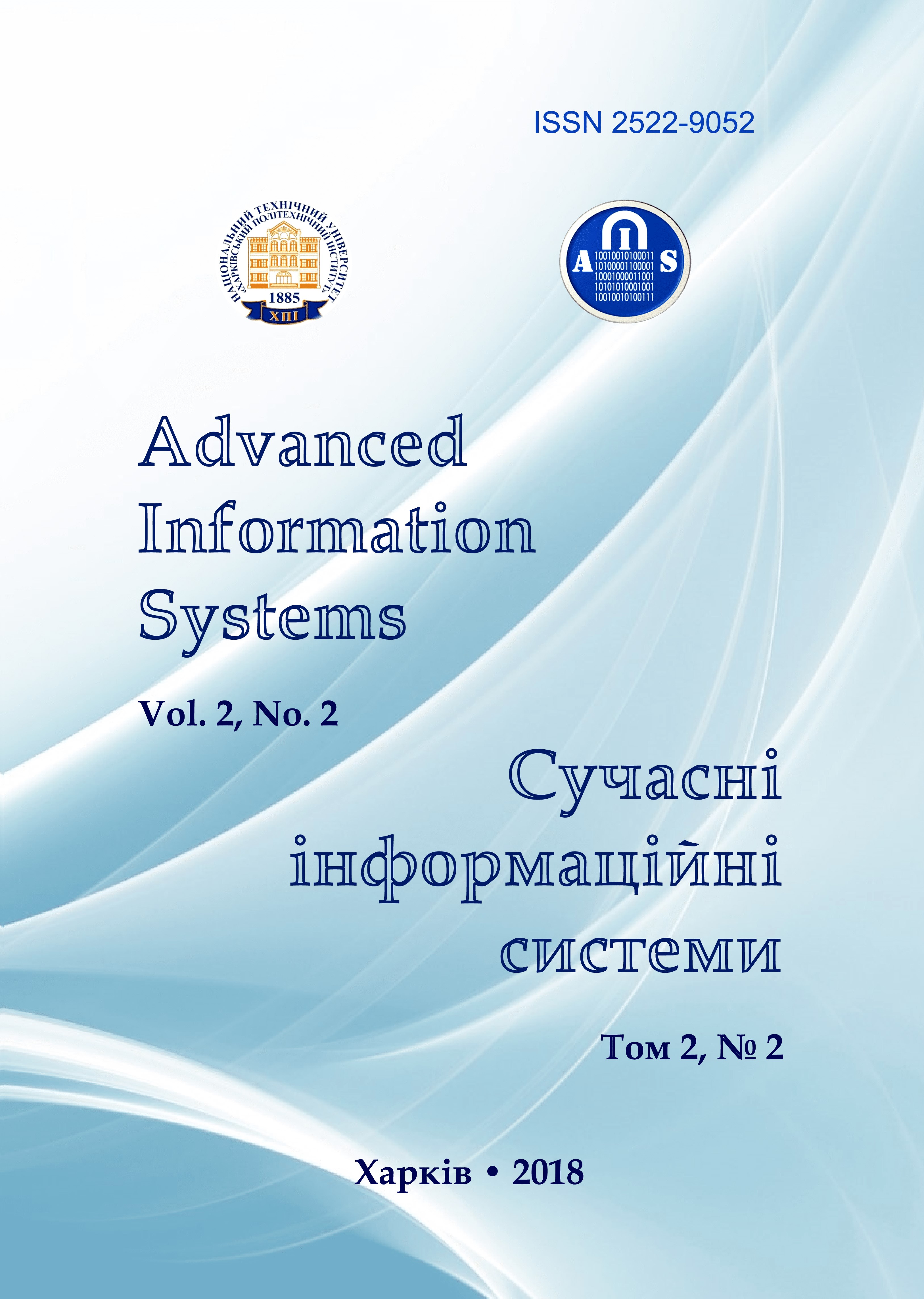MOBILE USERS’ MULTIPLE DETECTION METHOD ON THE BASIS OF THE PARTICLE SWARM OPTIMIZATION IN THE COGNITIVE RADIO NETWORK
Main Article Content
Abstract
In the article, the object is mobile users’ multiple detection processes based on the particle swarm optimization in the cognitive radio network. The aim of the research lies in the field of the algorithms of the mobile users’ detection of the cognitive radio system. In addition, it lies in the area of development of the generalized algorithm PSO-NN and improvement the method of multiple detection by using the particle swarm method and convolutional neural network and its realization. The tasks are to develop the multiple detection architecture, the generalized algorithm PSO-NN, to realize the multiple detection algorithm and to model PSO-NN as the algorithm of the multiple detection effectiveness for 50 mobile devices. The methods used are mathematical models based on the principles of the organization and operations of biological neural networks, mathematical learn models, and NP-hard algorithm theory methods. The following results were received. The multiple detection architecture was developed, which differs from the known ones since each location is divided into the subzones. In the different subzones, a mobile user can receive different measuring results in the same channel. Such a division can be used for more flexible data using. Developed generalized algorithm PSO-NN differs from the known ones as it is configured more correctly for the real conditions that inherent in the architecture of the cognitive systems. This algorithm uses particle swarm optimization controlled by the convolutional neural network. Therefore, strict access to spectrum analysis based on mobile users’ energy component is provided. Due to the use of the micro particle architecture and convolutional neural networks, detection effectiveness function and global particle location are detected in a more accurate way. Further implementation of the multiple detection algorithm differs from the known ones since after uniting the detected channel users’ matrices, only one user is assigned to a specific channel. Such an implementation assumes more realistic search area and speed of the users’ detection with found channels. Modeling PSO-NN as the multiple detection effectiveness algorithm for 50 mobile users has several convolutional layers that were generalised with each other. Such architecture can be a confirmation of the fact that the neural network chosen in a practical way completely satisfies the tasks. The modeling result showed that at 20 locations the detection effectiveness with using the algorithm PSO-NN increased by 10% in 20 locations, by 20% in 25 locations, by 20% in 30 locations, by 20% in 35 locations, while the results did not change in 40 locations.
Article Details
References
Mitola III, J. and Maguire Jr., G.Q. (1999), “Cognitive radio: making software radios more personal”, IEEE Personal Communications, Vol. 6, no. 4, pp. 13–18.
Guo, B. Wang, Z., Yu Z. et al. (2015), “Mobile crowd sensing and computing: the review of an emerging human-powered sensing paradigm”, ACM Computing Surveys, Vol. 48, No. 1, Article 7.
Saleem, Y. and Rehmani, M.H. (2015), “Primary radio user activity models for cognitive radio networks: a survey”, Journal of Network and Computer Applications, Vol. 43, pp. 1–16.
Arslan, H. (2009), “A survey of spectrum sensing algorithms for cognitive radio applications”, IEEE Communications Surveys & Tutorials, Vol. 11, No. 1, pp. 116–130.
Zeng, F., Tian, Z. and Li, C. (2010), “Distributed compressive wideband spectrum sensing in cooperative multi-hop cognitive networks”, Proceedings of the 2010 IEEE International Conference on Communications, ICC 2010.
Feng, J., Lu, G., Wang, H. and Wang, X. (2016), “Supporting secure spectrum sensing data transmission against SSDH attack in cognitive radio ad hoc networks”, Journal of Network and Computer Applications, Vol. 72, pp. 140–149.
Zhang, R., Zhang, J., Zhang, Y. and Zhang, C. (2013), “Secure crowdsourcing-based cooperative pectrum sensing,” Proceedings of the 32nd IEEE Conference on Computer Communications, IEEE INFOCOM 2013, pp. 2526–2534.
Lu, Y., Wang, D. and Fattouche, M. (2016), “Cooperative spectrum-sensing algorithm in cognitive radio by simultaneous sensing and BER measurements”, Eurasip Journal on Wireless Communications and Networking, Vol. 2016, No. 1, Article 136.
Liu, C.-H., Azarfar, A., Frigon, J.-F., Sansò, B. and Cabric, D. (2015), “Robust cooperative spectrum sensing scheduling optimization in multi-channel dynamic spectrum access networks”, IEEE Trans. on Mobile Computing, Vol. 15, No. 8, pp. 2094–2108.
Zhu, J., Jiang, D., Ba, S. and Zhang, Y. (2017), “A game-theoretic power control mechanism based on hidden Markov model in cognitive wireless sensor network with imperfect information,” Neurocomputing, Vol. 220, pp. 76–83.
Arora, P., Xia,N. and Zheng, R. (2011), “A Gibbs sampler approach for optimal distributed monitoring of multi-channel wireless networks”, Proceedings of the 54th Annual IEEE Global Telecommunications Conference: "Energizing Global Communications", GLOBECOM 2011.
Shin, D.-H., Bagchi, S. and Wang, C.-C. (2012), “Distributed online channel assignment toward optimal monitoring in multi-channel wireless networks”, Proc. of the IEEE Conf. on Computer Communications, IEEE INFOCOM 2012, pp. 2626–2630.
Shin, D.-H. and Bagchi, S. (2013), “An optimization framework for monitoring multi-channel multi-radio wireless mesh networks,” Ad Hoc Networks, Vol. 11, No. 3, pp. 926–943.
Shin, D.-H., He, S. and Zhang, J. (2015), “Joint sensing task and subband allocation for large-scale spectrum profiling”, Proc. of the 34th IEEE Annual Conference on Computer Communications and Networks, IEEE INFOCOM 2015, pp. 433–441.
Eberhart, R.C. and Kennedy, J. (1995), “A new optimizer using particle swarm theory”, Proceedings of the 6th International Symposium on Micro Machine and Human Science (MHS '95), pp. 39–43, Nagoya, Japan, 1995.
